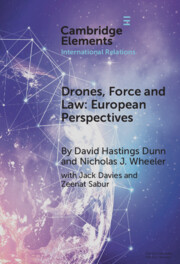Element contents
Drones, Force and Law
Published online by Cambridge University Press: 04 December 2023
Summary
- Type
- Element
- Information
- Online ISBN: 9781009451499Publisher: Cambridge University PressPrint publication: 18 January 2024
References
- 5
- Cited by

